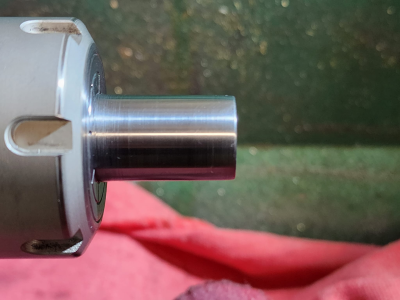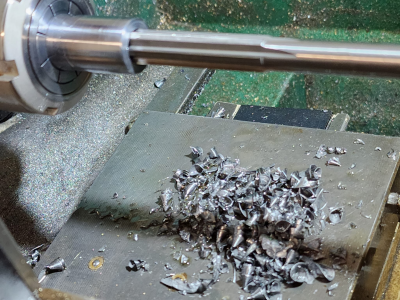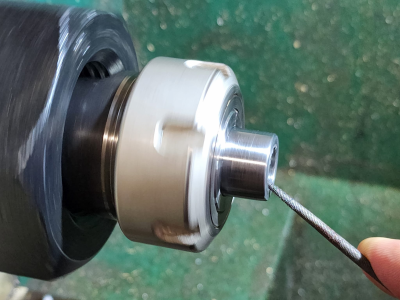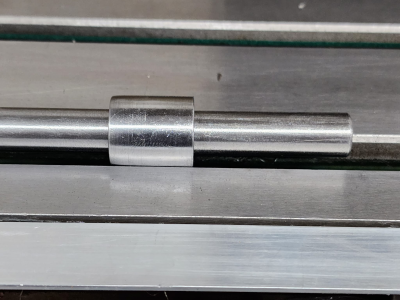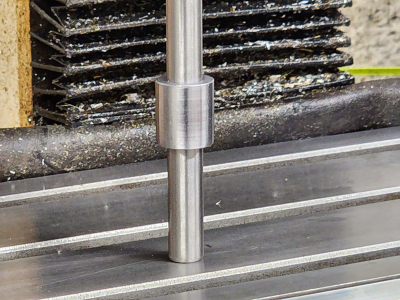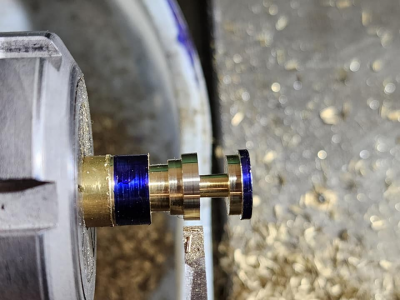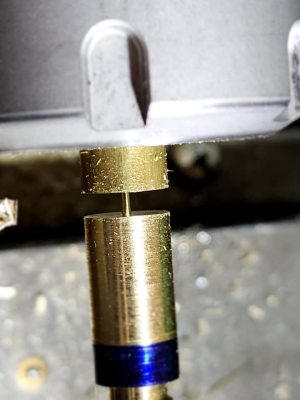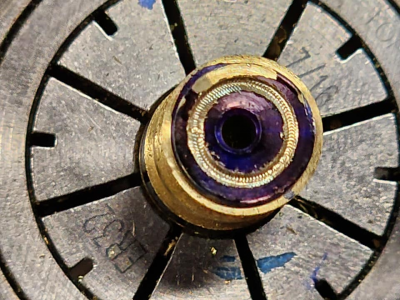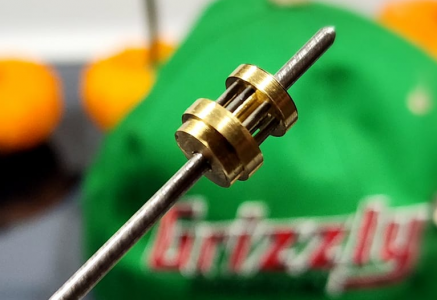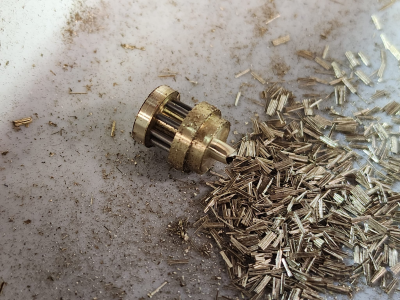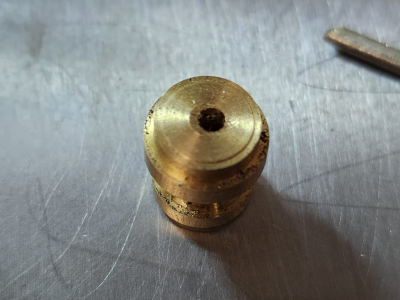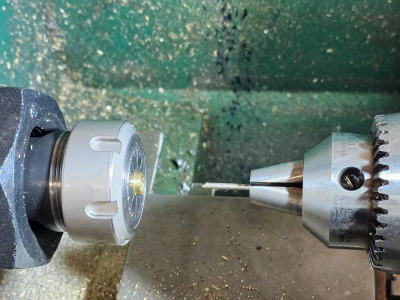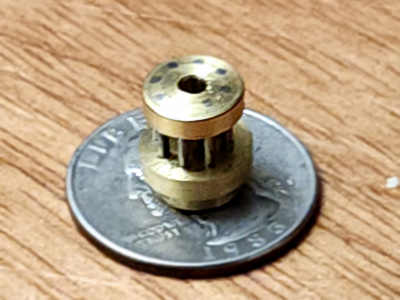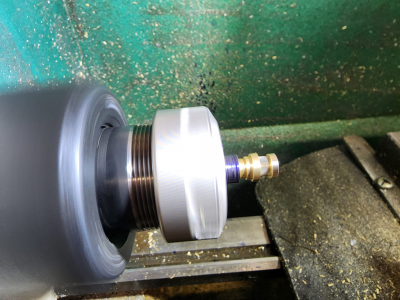- Joined
- Mar 2, 2018
- Messages
- 232
Hey now, hey now, hey now, WAIT JUST A MINUTE! I said the tram was good, I was really sure the tram was good.
I use one of those Edge Technology deals with two indicators. I know you can make one, and there are other methods, and I fell for a scam product that costs more than it's worth. Heard it all before. At the end of the day, though, you can't say it doesn't give accurate readings. Here is the setup, don't bother looking at the indicators.
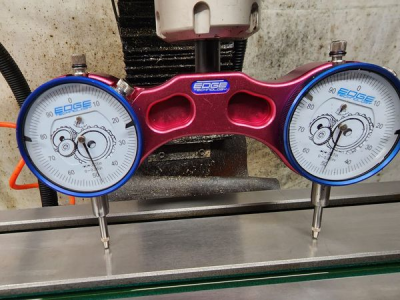
So after removing the fixtures and stoning the table. Oh yeah, I got it level too. Close enough.
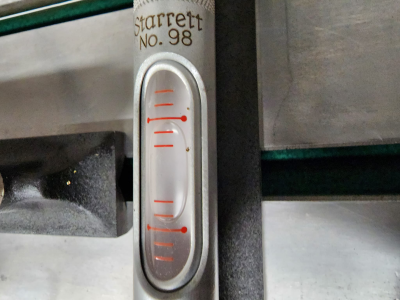
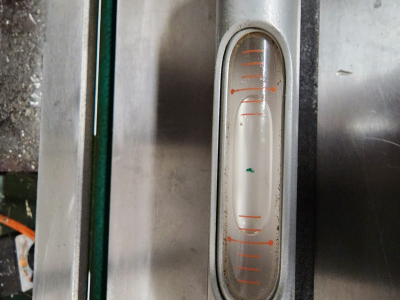
I set the right gauge to 0 with the quill fine feed, and then I locked the quill. Both needles moved. It happens. It's a Chinese mill. Locking the quill always changes the depth by at least 0.001" and I just account for that. So with those caveats, these were the needles:
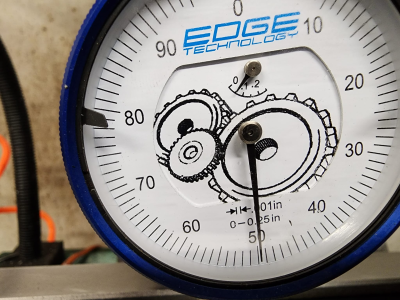
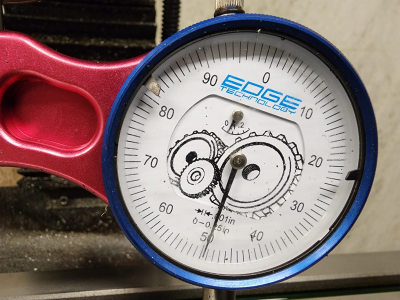
So I guess somebody owes me $5.00 after all. I said it was in tram, and that is as good as the tram is ever going to get on a Grizzly g0704. I stand by this reading.
I'm very glad I don't have to touch the tram adjustment.
So how about the shims on the column?
It would have been great if these had read the same, but 0.005" of forward nod is not enough for me to mess with the shims. This adjustment is hard to make, and I chased the best reading obsessively. I know the calibrated shim stock I used didn't squish. The only adjustment possible is to loosen the four hex head cap screws holding the column to the base, apply shims, and tighten to full torque. At anything less than full torque, you can't get a useful reading.
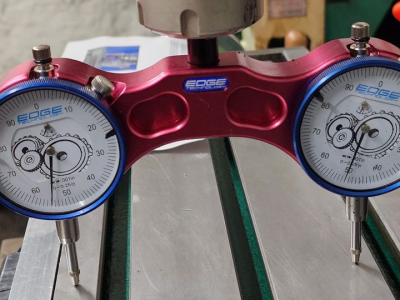
I mean, okay, technically this is NOT the only adjustment possible. I could do the adjustment bolt mod, where you drill and tap holes for adjustment bolts that work independently of the clamping bolts. But I only have like 0.0015" shims in here Maybe 0.003" in one spot. Those adjustment bolts are barely going to adjust anything, and they will dent the cast iron, and... Yeah, you get the point.
I decided to try just tightening the column bolts. Actually, I'm going to eat a pork shop first. I make the breading from scratch, and double dip them before deep frying. If I die of a heart attack because of these pork chops, it was worth it. All of this is massively off-topic, so I made the picture really small.
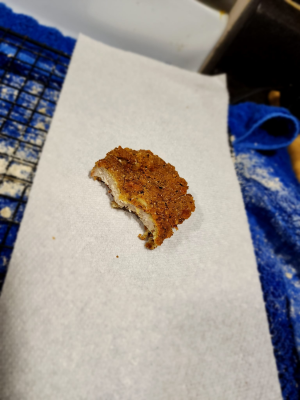
So yeah. Anyway. (Burp!) Let's try tightening those bolts.
Yeah, they're all super tight. I almost loosened them, and tried inserting a shim. You just have to make a wild guess and hope for the best. Then I decided that Younger Me would have done his level best, and he was really thorough and obsessive. Every measurement on this mill goes sloppy by 0.005" if you just measure it during the wrong moon phase. Since my tram was as good as I remember leaving it, the column nod is probably about as good as it can ever get. Using the machinist square method, the reading varies wildly depending on the height of the column. I'm pretty sure the moon phase, and Earth's relationship to Jupiter also affect the measurement.
So I fixed it a different way. Look at that! Same reading on both sides! Fixed!
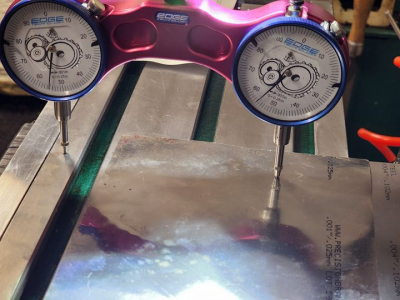
I use one of those Edge Technology deals with two indicators. I know you can make one, and there are other methods, and I fell for a scam product that costs more than it's worth. Heard it all before. At the end of the day, though, you can't say it doesn't give accurate readings. Here is the setup, don't bother looking at the indicators.

So after removing the fixtures and stoning the table. Oh yeah, I got it level too. Close enough.


I set the right gauge to 0 with the quill fine feed, and then I locked the quill. Both needles moved. It happens. It's a Chinese mill. Locking the quill always changes the depth by at least 0.001" and I just account for that. So with those caveats, these were the needles:


So I guess somebody owes me $5.00 after all. I said it was in tram, and that is as good as the tram is ever going to get on a Grizzly g0704. I stand by this reading.
I'm very glad I don't have to touch the tram adjustment.
So how about the shims on the column?
It would have been great if these had read the same, but 0.005" of forward nod is not enough for me to mess with the shims. This adjustment is hard to make, and I chased the best reading obsessively. I know the calibrated shim stock I used didn't squish. The only adjustment possible is to loosen the four hex head cap screws holding the column to the base, apply shims, and tighten to full torque. At anything less than full torque, you can't get a useful reading.

I mean, okay, technically this is NOT the only adjustment possible. I could do the adjustment bolt mod, where you drill and tap holes for adjustment bolts that work independently of the clamping bolts. But I only have like 0.0015" shims in here Maybe 0.003" in one spot. Those adjustment bolts are barely going to adjust anything, and they will dent the cast iron, and... Yeah, you get the point.
I decided to try just tightening the column bolts. Actually, I'm going to eat a pork shop first. I make the breading from scratch, and double dip them before deep frying. If I die of a heart attack because of these pork chops, it was worth it. All of this is massively off-topic, so I made the picture really small.

So yeah. Anyway. (Burp!) Let's try tightening those bolts.
Yeah, they're all super tight. I almost loosened them, and tried inserting a shim. You just have to make a wild guess and hope for the best. Then I decided that Younger Me would have done his level best, and he was really thorough and obsessive. Every measurement on this mill goes sloppy by 0.005" if you just measure it during the wrong moon phase. Since my tram was as good as I remember leaving it, the column nod is probably about as good as it can ever get. Using the machinist square method, the reading varies wildly depending on the height of the column. I'm pretty sure the moon phase, and Earth's relationship to Jupiter also affect the measurement.
So I fixed it a different way. Look at that! Same reading on both sides! Fixed!



